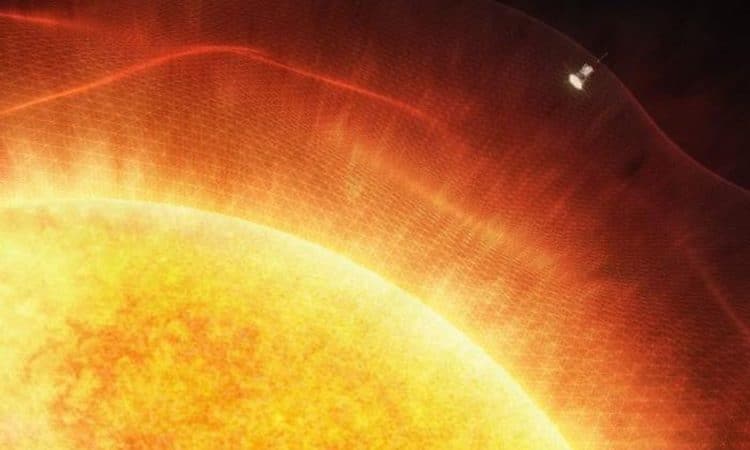
Since the 1960s, astronomers have wondered how the Sun’s supersonic “solar wind,” a stream of energetic particles flowing through the Solar System, continues to have energy once it leaves the Sun.
Now, thanks to a lucky alignment of spacecraft from NASA and ESA, both currently studying the Sun, they may have discovered the answer – knowledge that is a crucial piece of the puzzle to help scientists better forecast solar activity between the Sun and the Earth.
A paper published in the journal Science provides compelling evidence that the fastest solar winds are powered by magnetic switchbacks, or large bends in the magnetic field,
“The study addresses a huge open question about how the solar wind is energized and helps us understand how the Sun affects its environment and ultimately Earth,” said Yeimy Rivera, co-leader of the study and postdoctoral researcher at the Smithsonian Astrophysical Observatory, part of the Center for Astrophysics | Harvard & Smithsonian.
“If this process is taking place in our local star, it is very likely that this will feed winds from other stars in the Milky Way galaxy and beyond, and could have implications for the habitability of exoplanets.”
Previously, NASA’s Parker Solar Probe found that these changes in direction are common in the solar wind. Parker, which became the first spacecraft to enter the Sun’s magnetic atmosphere in 2021, allowed scientists to establish that reversals become more distinct and stronger near the Sun.
A stream of energetic particles flowing in the Solar System
However, until now, scientists have had no experimental evidence that this interesting phenomenon actually deposits enough energy to be
The team of scientists had to use two different spacecraft. Parker is built to fly through the Sun’s atmosphere, or “corona.” ESA and NASA’s Solar Orbiter mission is also in an orbit that takes it relatively close to the Sun and measures the solar wind at greater distances.
The discovery was made possible by a fortuitous alignment in February 2022 that allowed both Parker Solar Probe and Solar Orbiter to measure the same solar wind stream two days apart. Solar Orbiter was almost halfway to the Sun as Parker skirted the edge of the Sun’s magnetic atmosphere, he writes.
“At first we didn’t realize at all that Parker and Solar Orbiter were measuring the same thing. Parker saw this slower plasma near the Sun that was full of switching waves, and then Solar Orbiter recorded a fast flow that received heat and very little wave activity,” said Samuel Badman, an astrophysicist at the Center for Astrophysics and the other co-leader of the study.
How much energy is stored in magnetic fluctuations?
Scientists have known for a long time that energy is transported through the Sun’s corona and solar wind, at least in part, by what are called “Alfvén waves.” These waves carry energy through a plasma, the superheated state of matter that makes up the solar wind.
However, the extent to which Alfvén waves also evolve between the Sun and Earth could not be measured – until these two missions were sent ever closer to the Sun.
Now scientists can find out directly how much energy is stored in the magnetic and speed fluctuations of these waves near the corona, and how much less energy is carried by waves farther from the Sun.
The new research shows that Alfvén waves in the form of switchback provide enough energy to explain the heating and acceleration documented in the faster stream of the solar wind as it moves away from the Sun.

